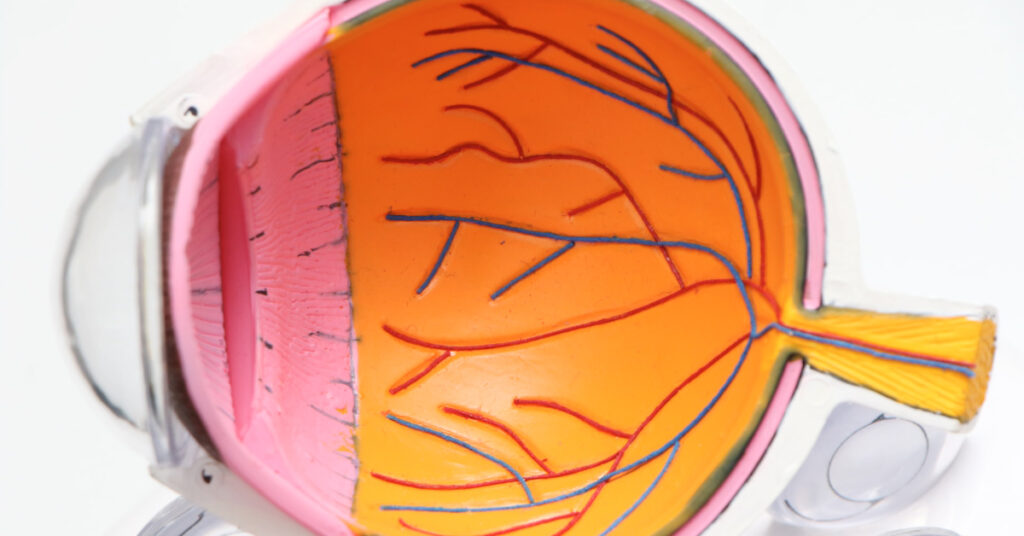The eyeball is one of the main organs that enables the human’s ability to see. It is made up of many different working parts, and is both delicate and powerful in nature. One of the most essential parts of the eyeball is the retina.
The retina is a thin layer of tissue that lines the back surface of the eyeball. Its job is to receive light from the lens, convert that light to neural signals and then transmit them to the brain for visual recognition.
Retina’s Primary Function
The retina processes light through a layer of photoreceptor cells. Photoreceptor cells are light-sensitive cells, responsible for detecting qualities like color and light-intensity.
The retina is made up of ten layers of photoreceptor cells that work together to detect color/light and turn it into electrical impulses. These cells are also known as cones and rods.
- Cones are located in the central, or macula, part of the retina. These cells help to detect color and fine detail. The macula allows the eye to perform functions like reading, writing, and recognizing people’s facial details.
- Rods are located in the peripheral, or outer, part of the retina. These cells help to see in low lighting and also aid in peripheral vision.
The retina processes the information gathered by the photoreceptor cells and sends this information to the brain via the optic nerve. See the eye illustration for further reference.

Source: Mayo Clinic
Retina Problems
Due to the retina’s fragile nature, it can be damaged by a wide range of factors; including traumas, chronic conditions, and other underlying health issues. Some of the most common retina problems are:
Macular Degeneration
Macular degeneration is the most common cause of blindness in adults over the age of 65.
Also known as age-related macular degeneration (AMD), this condition affects the central part of the retina called the “macula”. In macular degeneration, the center of the retina begins to deteriorate, causing blurred vision.
Read more about macular degeneration >>
Diabetic Retinopathy
Diabetic retinopathy, also known as diabetic macular edema, is the most common cause of blindness in adults in the Western World. It is caused by high blood sugars damaging the blood vessels in the retina, leading to significant vision loss.
Read more about diabetic retinopathy >>
Macular Hole
Macular hole is a defect in the central retina (macula) leading to decreased central vision. Macular holes usually develop as a result of the natural aging process or from an injury to the eye.
Read more about macular hole >>
Retinal Detachment
Retinal detachment is an emergency condition where the tissue in the back of the eye (retina) separates from its blood supply. If not treated in a timely manner, a retinal detachment can lead to blindness.
Read more about retinal detachment >>
Retina Health
As a delicate part of the eyeball, the retina needs to be kept up and cared for. While many retina conditions produce only minor symptoms, it’s important to remain proactive to preserve your vision. If you believe you may be at risk for a retina condition or want to learn more about different retina conditions, reach out to us today. Dr. Pandya services the Dallas Fort Worth community with offices in both Plano and Waxahachie, Texas.

